Monitoring of water and its pollutants - Il monitoraggio dell’acqua e dei suoi inquinanti
Hi everyone,
Today I am talking to you about a theme that in my opinion is particularly important: Water. It is called "blue gold" and is an essential necessity for all forms of life on Earth, including man.
Recently, however, the WHO has highlighted a serious problem relating to the fact that 1 in 6 people in the world would not have access to drinking water.
Furthermore, if our lifestyle remains the same today, it is estimated that, by 2025, 2 billion inhabitants will live in high risk of water crisis. In fact, water is a primary good but it does not seem to be divided correctly: a man in Europe consumes up to 250 liters of water per day, while a man in Africa only 20 liters.
These data make us reflect on the importance of this vital liquid and, fortunately, more and more people are becoming sensitive to the issue.
In the post I will talk about water analysis taking as reference the regulations in force in Europe and in Italy. In particular, Directive 2009/90/CE establishes which are the technical specifications for chemical analysis and monitoring of the state of the water.
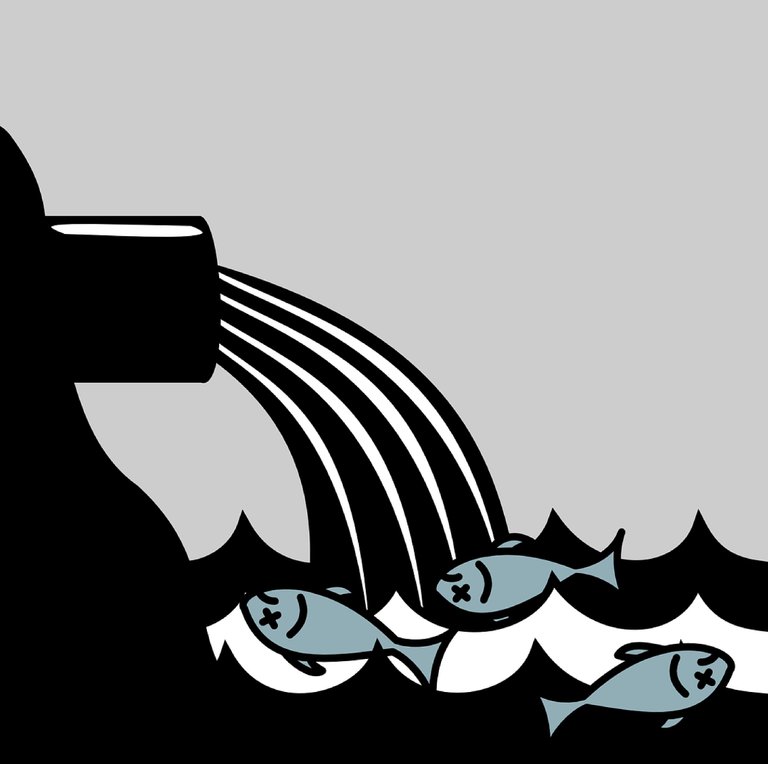
Photo by OpenClipart-Vectors from Pixabay
Types of water
About 70% of the planet's surface is covered with water. Of this percentage, over 95% is that of the oceans. The water with which man is most directly in contact is the fraction of fresh water. Of these, ¾ are glacial waters trapped in the caps, while ¼ is available to man in liquid form. Of this percentage, a large part is deep water and what remains is the water of rivers and lakes.
There are different types of water which, consequently, will require different types of analysis:
- Drinking: They are intended for human consumption and are those that come out of the domestic distribution system. They require numerous analysis that are aimed at verifying the adequacy for human use and the microbiological and chemical purity;
- Waste: These are waters that derive from the home, industries and urban areas. There are specific analysis that assess the correspondence to requirements that allow entry into the sewer system or surface water;
- Surfaces: They are those currents of rivers, streams and canals, stagnant of lakes and swamps and marine waters. For this type of water, the analysis are designed to assess the state of conservation and the quality of the environment;
- Underground: They are stored in the pores between the rocks or in the sedimentary particles and these, like the previous ones, are also subjected to analysis to verify the conservation of the environmental quality.
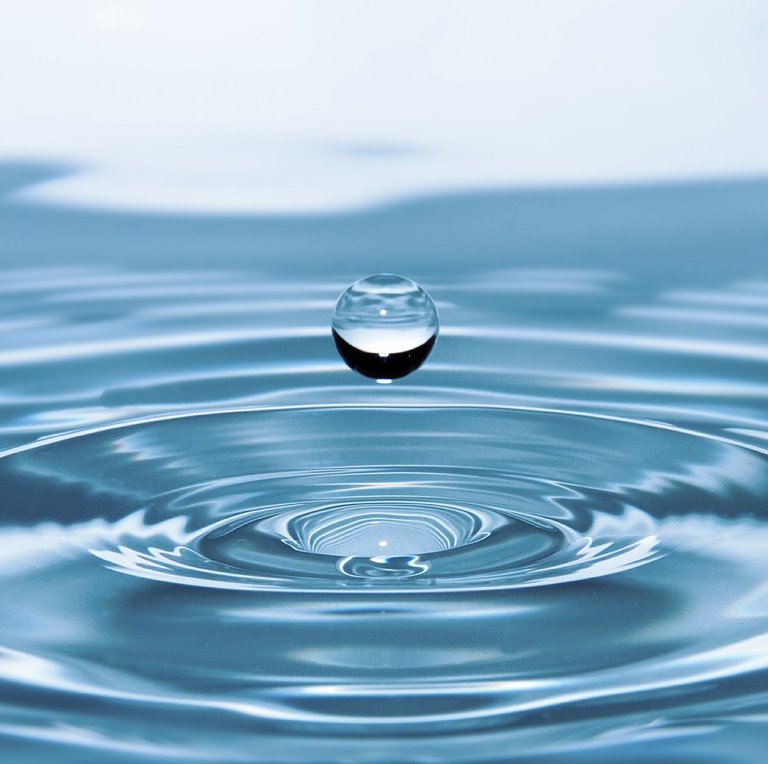
Photo by rony michaud from Pixabay
The water footprint
Some time ago I talked about the carbon footprint (sum of all greenhouse gas emissions caused by the life of the product) and also for water there is a similar parameter called water footprint.
It is an indicator of the total volume of water resources used by a country, an organization, a person, a production process for a good or service.
It's composed by:
- Blue: Consumption of surface and underground water resources along the entire production chain of a given asset;
- Green: Consumption of water resources contained in plants and soil in the form of humidity, without being part of any surface or underground body of water. Rainwater is an example. This fraction serves to understand the value of agriculture in terms of saving blue water resources;
- Gray: Pollution of water resources and is defined as the volume of fresh water necessary to dilute the load of pollutants generated by a specific process, so as to keep the concentrations naturally present and the quality standards of the water of origin unchanged.
To know your water footprint click here!
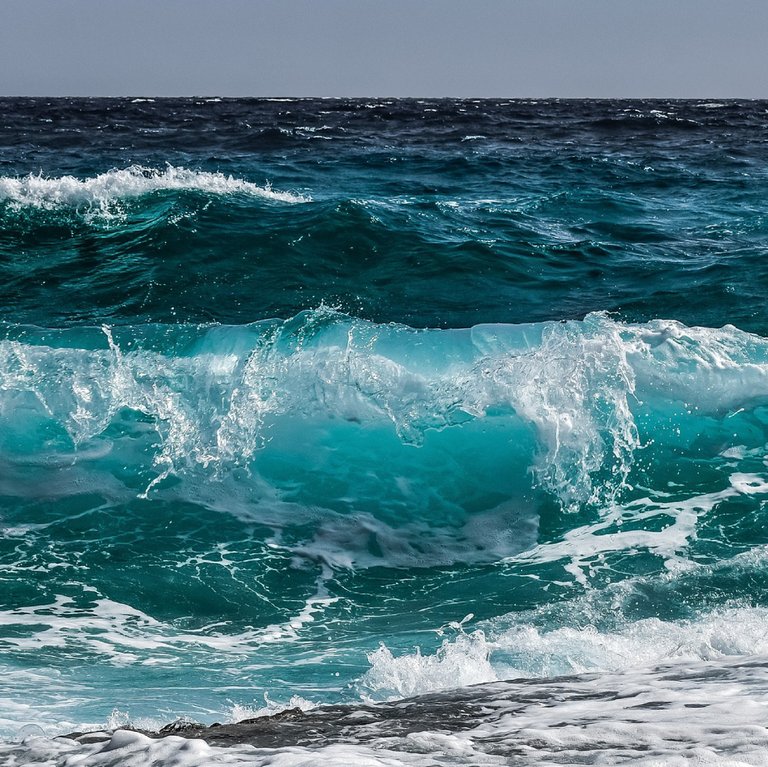
Photo by Dimitris Vetsikas from Pixabay
Parameters that influence the quality of the water
Here are the main processes that can change the quality of the water:
- Exchanges with sediments for leaching of rocks and soils;
- Sedimentation;
- Effect of organisms that live in water;
- Gas exchange with the atmosphere;
- Volatilization and evaporation;
- Inflows with other types of water.

Photo by Isaín Calderón from Pixabay
Contaminants and pollutants
A contaminant is a species or material found in a place or at a concentration out of the norm. A contaminant can become polluting when its quantity is sufficient to adversely affect the environment and/or living beings, compromising the usability of the environment.
These substances can either be already naturally present in nature (phosphorus, ozone in the atmosphere, ...) or they can be new molecules that were not present and were produced by man and released into the environment (polymeric materials, fluorocarbons, synthetic pesticides , ...).
It is estimated that they are more than 20,000 synthesis compounds of industrial origin, which have different chemical-physical characteristics and this makes it difficult both their research and to know the adverse effects on flora, fauna and man. The damages are very often not immediately visible, but only with chronic exposure.
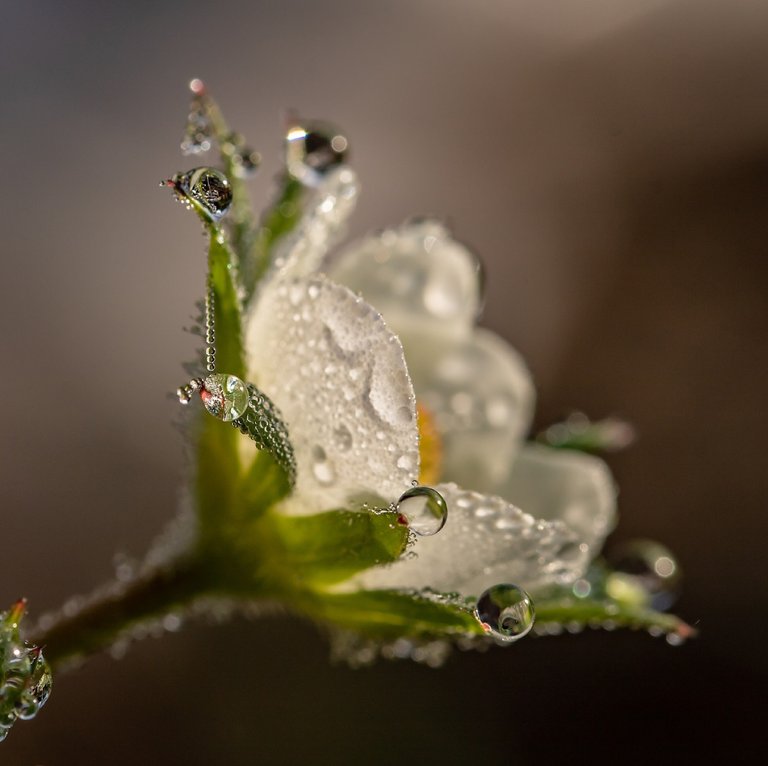
Photo by Myriam Zilles from Pixabay
Contaminants can be classified into:
- Conventional (pathogenic microorganisms, solid suspensions, ...);
- Unconventional: We know that, even at low levels, they are capable of causing harmful effects. They remain for a long time and accumulate in the environment (heavy metals, persistent organic compounds, ...);
- Emerging: Substances that have only recently been considered pollutants (drugs for human and veterinary use, cosmetic and personal care products, nanomaterials, ...).
Another classification provides for the distinction in:
- Physicists;
- Chemists;
- Microbiological.
The environment is a very dynamic system and, therefore, it is important to consider that the evaluation of the quality of a given site must consider the dynamic interactions that pollutants have with the environment itself.
The transport of pollutants across the atmosphere or oceans can occur at distances of hundreds or thousands of kilometers, making pollution control a global problem. The transport can be in the homogeneous phase (if it is soluble) or in the heterogeneous phase.
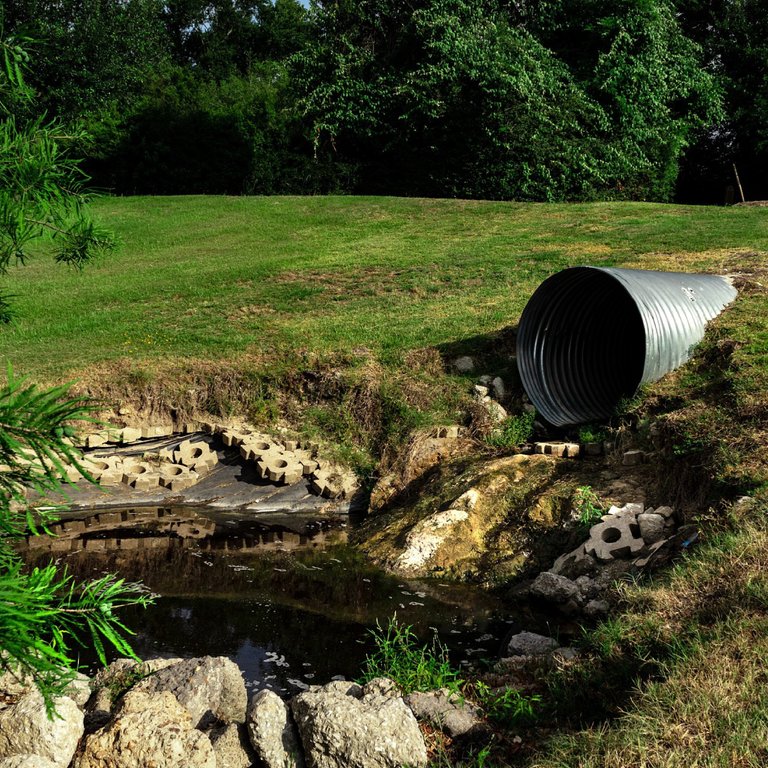
Photo by Thomas Hoang from Pixabay
Water pollutants
We can distinguish the sources of pollution as:
- Widespread: Agricultural, breeding and urban activities;
- Point: Both industrial and urban drains. They are more easily controlled because the discharge of water into rivers is regulated and it is necessary to check that the levels of pollutants are below certain levels before being able to release the waste water into the environment.
Once arrived in the environment, the pollutants can undergo dilution phenomena in the volume of water and the concentrations can vary depending on the distance from the source of the pollution.
Pollutants can travel in suspension in particulate matter or they can be solubilized in water. If they are sufficiently volatile, they can pass into the gas phase and into the atmosphere.
Furthermore, the pollutants come into contact with the organisms that inhabit that water body and biomagnification phenomena can occur, or phenomena for which particular pollutants are able to reach high concentrations precisely in the organisms that inhabit that aqueous environment and, moreover, their own. within organisms they can undergo transformations.
An example is mercury, which inside the bacteria that inhabit the aquatic environment is converted into an organometallic compound (methylmercury), which is much more harmful and toxic than the inorganic cation.

Photo by Evgeni Tcherkasski from Pixabay
Sampling of the waters
The sampling must consider that the concentrations of a particular pollutant that we are going to look for can be variable, both in space and in time.
It must be carefully planned, even before going to the field: how many samples to collect, which containers to use, which analysis will be carried out, ...
For water there may be problems with the lack of homogeneity of the samples and therefore the sampling procedures must be designed to obtain the maximum representativeness of the samples taken.
Stratification in water samples can be linked to factors of:
- Flow;
- Salinity;
- Temperature;
- Precipitations;
- Seasonal differences.
We can find different instruments:
- Automatic samplers: They are able to collect, at certain time intervals, different samples and keep them at low temperature until the operator takes care of the analysis. There are also systems to collect rainwater that are activated when they detect the presence of rainfall;
- Instant samplers (grab sampe): We have a more manual technique. The operator collects the water at a specific time and at a specific depth. If you want to collect deep water, simply placing the jar at the desired depth, but more sophisticated instruments must be used which allow you to open the sampler only to the desired depth (Van Dorn, Niskin sampler, ...). There are also systems that allow us to collect solid bodies of water sediment;
- Average sampler: The sample is obtained by taking samples in a given time interval, possibly proportionally to the flow rate of the effluent. It is used if there are strong variations over time or in any case it is necessary to define with greater certainty an average value that characterizes a variable of the aquatic environment in question.
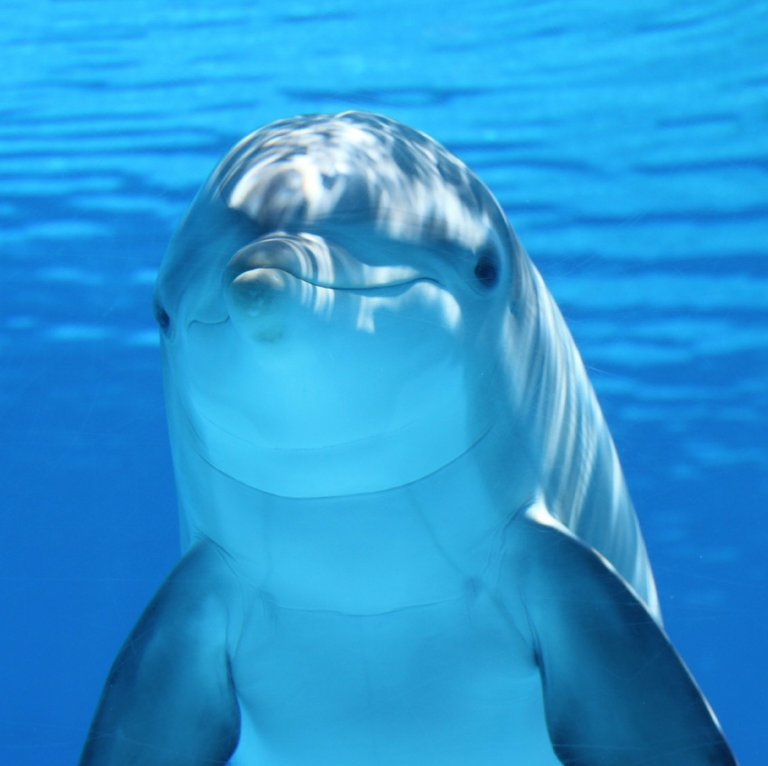
Photo by Claudia Beer from Pixabay
Water quality parameters
The parameters that are commonly measured to define the quality of the water are:
- Suspended solids (total suspended solids and turbidity);
- Dissolved oxygen;
- Biochemical oxygen demand (BOD) and chemical oxygen demand (COD);
- Total organic carbon (TOC);
- pH, acidity and alkalinity;
- Hardness;
- Electric conducibility;
- Common ion content;
- Temperature, color, smell.

Photo by G J Whitby from Pixabay
Thanks for reading my post!
I hope you enjoyed this introduction to the world of water analysis. It does not end here, stay tuned!
See you next time,
Delilha
ITA
Ciao a tutti,
Oggi vi parlo di un tema che a mio avviso è particolarmente importante: l’Acqua. Essa è definita l’”oro blu” ed è un bene di prima necessità importante per tutte le forme di vita sulla Terra, uomo compreso.
Recentemente, però, l’OMS ha messo in luce una grave problematica relativa al fatto che 1 persona su 6 al mondo non avrebbe accesso all’acqua potabile.
Inoltre, se il nostro stile di vita rimanesse lo stesso di oggi, si stima che, entro il 2025, 2 miliardi di abitanti vivranno in alto rischio di crisi idrica. Infatti, l’acqua è un bene primario ma sembra non essere spartito nel modo corretto: un uomo in Europa consuma fino a 250 litri di acqua al giorno, mentre un uomo in Africa solamente 20 litri.
Questi dati fanno riflettere sull’importanza di questo liquido vitale e, per fortuna, sempre più persone stanno diventando sensibili alla tematica.
Nel post parlerò delle analisi delle acque prendendo come riferimento le normative vigenti in Europa e in Italia. In modo particolare, la direttiva 2009/90/CE stabilisce quali sono le specifiche tecniche per l’analisi chimica e il monitoraggio dello stato delle acque.

Foto di OpenClipart-Vectors da Pixabay
I tipi di acqua
Circa il 70% della superficie del pianeta è coperta di acqua. Di questa percentuale, oltre il 95% è quella degli oceani. L’acqua con cui l’uomo è più direttamente a contatto è la frazione di acque dolci. Di queste, ¾ sono acque glaciali intrappolate delle calotte, mentre ¼ è a disposizione dell’uomo in forma liquida. Di questa percentuale, buona parte è acque profonde e ciò che rimane è l’acqua dei fiumi e dei laghi.
Esistono diversi tipi di acque che, di conseguenza, richiederanno diversi tipi di analisi:
- Potabili: Sono destinate al consumo umano e sono quelle che fuoriescono dall’impianto di distribuzione domestico. Richiedono numerose analisi che sono volte a verificare l’adeguatezza per l’uso umano e la purezza microbiologica e chimica;
- Reflue: Sono acque che derivano dal luogo domestico, dalle industrie e dalle aree urbane. Esistono delle analisi specifiche che valutano la corrispondenza a requisiti che permettono l’immissione nella rete fognaria o nelle acque di superficie;
- Superficiali: Sono quelle correnti di fiumi, torrenti e canali, stagnanti di laghi e paludi e acque marine. Per questo tipo di acqua, le analisi hanno lo scopo di valutare lo stato di conservazione e la qualità dell’ambiente;
- Sotterranee: Si trovano immagazzinate nei pori tra le rocce o nelle particelle sedimentarie e anche queste, come le precedenti, sono sottoposte ad analisi per verificare la conservazione della qualità ambientale.

Foto di rony michaud da Pixabay
L’impronta idrica
Tempo fa avevo parlato dell’impronta di carbonio (somma di tutte le emissioni di gas serra causate dalla vita del prodotto) e anche per l’acqua esiste un parametro simile che si chiama impronta idrica.
Essa è un indicatore del volume totale di risorse idriche utilizzate da un paese, un’organizzazione, una persona, un processo di produzione di un bene o servizio.
E’ composta da:
- Blu: Consumo delle risorse idriche superficiali e sotterranee lungo tutta la catena di produzione di un determinato bene;
- Verde: Consumo di risorse idriche contenute nelle piante e nel suolo sottoforma di umidità, senza essere parte di una qualsiasi superficie o corpo idrico sotterraneo. Ne è un esempio l’acqua piovana, purché questa non ristagni nel suolo e sia in grado di filtrare nel terreno. Questa frazione serve a comprendere il valore dell’agricoltura in termini di risparmio di risorse idriche blu;
- Grigia: Inquinamento delle risorse idriche ed è definita come il volume di acqua dolce necessario a diluire il carico di inquinanti generato da un determinato processo, in modo da mantenere invariate le concentrazioni naturalmente presenti e gli standard qualitativi dell’acqua di origine.
Per conoscere la tua impronta idrica clicca qui!

Foto di Dimitris Vetsikas da Pixabay
Parametri che influiscono sulla qualità delle acque
Ecco quali sono i principali processi che possono modificare la qualità delle acque:
- Scambi con i sedimenti per dilavamento di rocce e terreni;
- Sedimentazione;
- Effetto degli organismi che vivono nell’acqua;
- Scambi gassosi con l’atmosfera;
- Volatilizzazione ed evaporazione;
- Afflussi con altri tipi di acqua.

Foto di Isaín Calderón da Pixabay
Contaminanti e inquinanti
Un contaminante è una pecie o materiale che si trova in un luogo oppure a una concentrazione fuori dalla normalità. Un contaminante può diventare inquinante quando la sua quantità è sufficiente a influire negativamente sull’ambiente e/o su esseri viventi, compromettendo la fruibilità dell’ambiente.
Queste sostanze possono essere o già naturalmente presenti in natura (fosforo, ozono nell’atmosfera, …) oppure possono essere molecole nuove che non erano presenti e sono state prodotte dall’uomo e immesse nell’ambiente (materiali polimerici, fluorocarburi, pesticidi di sintesi, …).
Si stima che siano più di 20.000 i composti di sintesi di origine industriale, i quali hanno caratteristiche chimico-fisiche diverse e ciò rende difficile sia la loro ricerca sia conoscere gli effetti avversi sulla flora, sulla fauna e sull’uomo. I danni molto spesso non sono visibili nell’immediato, ma sono visibili con un’esposizione cronica.

Foto di Myriam Zilles da Pixabay
I contaminanti possono essere classificati in:
- Convenzionali (microrganismi patogeni, sospensioni solide, …);
- Non convenzionali: Sappiamo che, anche a bassi livelli, sono in grado di determinare effetti dannosi. Rimangono a lungo e si accumulano nell’ambiente (metalli pesanti, composti organici persistenti, …);
- Emergenti: Sostanze che solo recentemente sono state considerate inquinanti (farmaci a uso umano e veterinario, prodotti cosmetici e per la cura della persona, nanomateriali, …).
Un’altra classificazione prevede la distinzione in:
- Fisici;
- Chimici;
- Microbiologici.
L’ambiente è un sistema molto dinamico e, quindi, è importante considerare che la valutazione della qualità di un determinato sito deve tenere conto delle interazioni dinamiche che gli inquinanti hanno con l’ambiente stesso.
Il trasporto di inquinanti attraverso l'atmosfera o gli oceani può avvenire a distanze di centinaia o migliaia di chilometri, rendendo il controllo dell’inquinamento un problema globale. Il trasporto può essere in fase omogenea (se è solubile) o in fase eterogenea.

Foto di Thomas Hoang da Pixabay
Inquinanti delle acque
Possiamo distinguere le fonti di inquinamento come:
- Diffuse: Attività agricole, di allevamento e le attività urbane;
- Puntiformi: Scarichi sia industriali che urbani. Sono più facilmente controllabili perché lo scarico delle acque nei fiumi è normato ed è necessario controllare che i livelli di inquinanti siano al di sotto di certi livelli prima di poter rilasciare le acque di scarico nell’ambiente.
Una volta arrivati nell’ambiente, gli inquinanti possono subire fenomeni di diluizione nel volume di acque e le concentrazioni possono variare a seconda della distanza dalla sorgente dell’inquinamento.
Gli inquinanti possono viaggiare in sospensione in particolato oppure si possono solubilizzare in acqua. Se sono sufficientemente volatili, possono passare in fase gassosa e in atmosfera.
Inoltre, gli inquinanti entrano in contatto con gli organismi che abitano quel corpo idrico e possono verificarsi fenomeni di biomagnificazione, ovvero fenomeni per i quali particolari inquinanti sono in grado di raggiungere concentrazioni elevate proprio negli organismi che abitano quell’ambiente acquoso e, inoltre, proprio all’interno degli organismi possono subire delle trasformazioni.
Un esempio è il mercurio, che all’interno dei batteri che abitano l’ambiente acquatico viene convertito in un composto organometallico (metilmercurio), che è molto più dannoso e tossico del catione inorganico.

Foto di Evgeni Tcherkasski da Pixabay
Campionamento delle acque
Il campionamento deve tenere conto che le concentrazioni di un particolare inquinante che stiamo andando a cercare possono essere variabili, sia nello spazio sia nel tempo.
Esso deve essere pianificato attentamente, ancora prima di andare sul campo: quanti campioni raccogliere, quali contenitori usare, quali analisi saranno effettuate, …
Per le acque si possono verificare dei problemi di disomogeneità dei campioni e quindi le procedure di campionamento devono essere progettate per ottenere la massima rappresentatività dei campioni prelevati.
La stratificazione nei campioni d'acqua può essere legata a fattori di:
- Flusso;
- Salinità;
- Temperatura;
- Precipitazioni;
- Differenze stagionali.
Possiamo trovare diverse strumentazioni:
- Campionatori automatici: Sono in grado di raccogliere, a determinati intervalli di tempo, diversi campioni e di mantenerli a bassa temperatura fino a quando l’operatore si occupa dell’analisi. Esistono anche dei sistemi per raccogliere le acque meteoriche che si attivano quando rilevano la presenza di precipitazioni;
- Campionatori istantanei (grab sampe): Abbiamo una tecnica più manuale. L’operatore raccoglie l’acqua in un determinato momento e a una determinata profondità. Se si desidera raccogliere un’acqua profonda, non è sufficiente porre il barattolo alla profondità desiderata, ma dovranno essere utilizzati degli strumenti più sofisticati che permettono di aprire il campionatore solamente alla profondità desiderata (campionatore di Van Dorn, di Niskin, …). Esistono anche dei sistemi che ci permettono di raccogliere corpi solidi del sedimento delle acque;
- Campionamento medio: Il campione è ottenuto effettuando prelievi in un dato intervallo di tempo, eventualmente in maniera proporzionale alla portata dell’effluente. Si utilizza nel caso siano evidenti forti variazioni nel tempo o comunque sia necessario definire con maggiore certezza un valore medio che caratterizzi una variabile dell’ambiente acquatico in esame.

Foto di Claudia Beer da Pixabay
Parametri di qualità delle acque
I parametri che vengono comunemente misurati per definire al qualità delle acque sono:
- Solidi sospesi (solidi sospesi totali e torbidità);
- Ossigeno disciolto;
- Domanda biochimica di ossigeno (BOD) e domanda chimica di ossigeno (COD);
- Carbonio totale organico (TOC);
- pH, acidità e alcalinità;
- Durezza;
- Conducibilità elettrica;
- Contenuto di ioni comuni;
- Temperatura, colore, odore.

Foto di G J Whitby da Pixabay
Grazie per aver letto il mio post!
Spero vi sia piaciuta questa introduzione sul mondo dell’analisi delle acque. Non finisce qui, stay tuned!
Alla prossima
Delilha
Sources – Fonti:
Fondamenti di chimica analitica (Skoog, West);
WWF;
Wikipedia;
http://www.expo2015.org/magazine/it/sostenibilita/l-impronta-idrica-2.html.

Link all'articolo sulla Pagina Facebook di Hive Italia
Grazie mille :) una buona giornata!
buon week-end anche a te
You talked about really important issue... Considering about the increasing heat of the world because of the pollution and In addition, in the water conversion balance, due to the decrease of water due to the destruction of forests and the ozone layer opening up as a result of global warming, the warming of the world and the imbalance of the climates cause drought.
Clean water will the future gold. It reminds me a movie I don't remember its name...a few men found gold but they need to go through entire desert.Some time later they all forgot the gold and try to survive in the desert.
Have a great day my friend...
I'd like to see the movie you're talking about.
Your words are really important and, above all, truthful! The problem of water and its pollutants is really serious, but I trust in the sensitivity of my generation and future ones in being able to change things. Hope must always be there.
Thanks for stopping by on my blog, I wish you a nice day :)
Wow...
!discovery 30
Thank you <3 have a nice day :)
This post was shared and voted inside the discord by the curators team of discovery-it
Join our community! hive-193212
Discovery-it is also a Witness, vote for us here
L'ho condiviso, post veramente interessante. Un saluto by kork75.👍
Grazie mille! Mi rende felice sapere che a qualcuno piacciono i miei post :) un saluto anche a te, alla prossima!
Congratulations @delilhavores! You have completed the following achievement on the Hive blockchain and have been rewarded with new badge(s) :
You can view your badges on your board And compare to others on the Ranking
If you no longer want to receive notifications, reply to this comment with the word
STOPDo not miss the last post from @hivebuzz:
Gran bel post! Complimenti!
Grazie mille :) mi fa molto piacere!
Aldilà del contenuto (Ottimo!) questo è l'esempio di come andrebbe strutturato un post. Perfetto!
Grazie mille, è un gran complimento :) Buona serata :)
A te.
This post was shared in the Curation Collective Discord community for curators, and upvoted and reblogged by the @c-squared community account after manual review.
@c-squared runs a community witness. Please consider using one of your witness votes on us here
Thank you very much :)